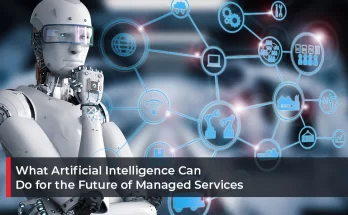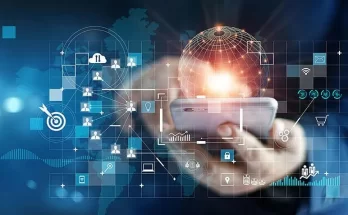Throughout the world, a significant digital revolution is underway. Technological breakthroughs hasten innovation, agility, and market expansion.
The epidemic of Covid-19 has spurred digitization and automation, allowing businesses to stay resilient even in the face of hardship. Many companies have adapted disruptive technologies and changed their business strategies as a result of them.
The effects of the epidemic will last a long time, and the digital shift will continue. It will be difficult to recover from a mistake if organizations do not stay up with technology advances. Advanced technology will continue to transform our lives and the way we do business, providing great potential for enterprises all around the world.
Let’s take a look at some recent technological advancements so that everyone knows what to look for, adopt, and bring along.
AI ( Artificial Intelligence ) :
Over the last decade, Artificial Intelligence (AI) has received a lot of attention. Because its substantial consequences on how we live, work, and play are still in their infancy, it remains one of the leading new technology developments. Image and speech recognition, ride-sharing apps, mobile personal assistants, navigation apps, and a variety of other applications are now well-known examples of AI.

In addition, Artificial Intelligence is used to examine interactions in order to uncover previously undetected linkages, as well as to estimate facility demand in real-time in order to distribute resources and identify dynamic patterns among customers.
Machine Learning, a subset of AI, is being employed in a wide range of businesses, resulting in an increase in the demand for qualified personnel.
Improved connection and 2.5G:
More than just opening web pages faster or waiting less time for YouTube videos to load, a faster and more consistent internet means more. Each breakthrough in mobile connectivity, starting with 3G, has ushered in new internet applications.

3G enabled online access and data-driven services on mobile devices as bandwidths increased; 4G permitted the growth of streaming video and music platforms; and 5G would do the same.
Networks that incorporate cutting-edge technologies, such as augmented reality and virtual reality, are known as 5G.
They also pose a danger to cable and fiber-based networks by requiring us to be tied to a certain spot.
In a word, 5G and other sophisticated, high-speed networks enable access to all of the previously mentioned trends from anywhere, at any time.
Machine learning applications that require real-time access to Big Data sources can be automated and deployed in the field.
Edge Computers:
Edge computing is a novel technology that guarantees low latency and high data processing speeds. Edge computing enables computations to be performed closer to data storage systems, resulting in better application performance.
The high bandwidth costs of cloud platforms can be a driving force behind edge computing adoption. The system tries to move fewer processes from the cloud to the user’s machine or an edge server.

Long-distance communication between the server and the client is eliminated when the gap between data and calculation is bridged, resulting in faster processes.
As a result, edge computing was developed to deal with time-sensitive data stored in remote places with limited access to a central site. The technology might be useful for cloud computing and IoT applications.
Informatics:
Data science was the next big thing for a long time in the early twenty-first century. Data science has existed for far longer than the last two years. Data analysis has been a necessary duty for businesses, government agencies, institutions, and departments for millennia. Data analysis is useful for determining process efficiency, conducting worker surveys, and gauging people’s overall mood.

However, much data analysis has gone digital in recent years. One of the earliest tasks for which computers are used is data analysis. Data analysis was so popular in the early 2000s that it was taught as an introductory course in school.
The advantage of a career in data science is that you are an integral component of the firm’s overall operation, regardless of the domain in which your company operates. Any organization you serve is going to rely on the data you generate and the interpretations you provide.
Data science is commonly utilized in retail and e-commerce to determine the performance of campaigns and the overall growth trend of various products. This, in turn, aids in the development of marketing strategies for certain items or product kinds. In health care, data informatics can help clinicians choose the safest yet most effective treatments for patients by offering low-cost options and packages.
IoB ( Internet of Behavior ) :
If you’re familiar with the Internet of Things (IoT), you should realize that it also includes the Internet of Behavior.
Data and insights are used to affect behavior in the Internet of Things (IoT). For Internet of Behavior (IoB) paradigms, IoT devices can be used as large databases.
With the help of IoB, businesses will be able to track client behavior and use it to benefit their various channels. A health-tracking app, for example, might collect data on your exercise routine, nutrition, sleep, and other habits. This data can be used to motivate people to modify their behavior, such as by designing individualized health regimens.
Computing quantum:
Quantum computing, which makes advantage of quantum phenomena like superposition and entanglement, is the next big thing in tech.This great technology trend also involves limiting the spread of the coronavirus and generating potential vaccinations, thanks to its ability to instantaneously question, track, understand, and act on data, regardless of source.
In banking and finance, quantum computing is now utilized to assess credit risk, execute high-frequency trading, and detect fraud. Traditional computers, including those from well-known corporations, are now multiple times quicker than quantum computers.
Blockchain:
Another popular technology trend is blockchain. Many individuals mistakenly believe that Blockchain is only about cryptocurrency, which is incorrect.
Bitcoin and other cryptocurrencies are only a small fraction of the whole Blockchain technology. It uses a variety of industries, including healthcare, supply chain and logistics, advertising, and so on, in addition to cryptocurrencies.

It’s a global network of computers that acts as a decentralized digital ledger, keeping track of any transaction.
Various businesses are looking for Blockchain platforms to help them develop top-level business strategies, which is propelling the blockchain technology industry forward.
The level of security and transparency provided by blockchain is the primary reason for its rapid growth.
Cybersecurity:
Although cybersecurity does not appear to be a cutting-edge technology, it advances at the same rate as other technologies. This is due in part to the introduction of new dangers on a regular basis.

Malicious hackers seeking unauthorised access to data will not give up easily, and they will continue to develop ways to circumvent even the most robust security measures. It’s mainly attributable to the increased use of advanced defence technologies.
Cybersecurity will continue to be a popular technology as long as we have hackers.
Augmentation:
Human augmentation is a broad word that refers to technological advancements that aim to boost human productivity and capacities. Human augmentation encompasses physical enhancement such as prosthesis, augmented reality spectacles, and RFID chips implanted inside individuals.
This could help people improve their cognitive, perception, and action skills. Sensing and actuation technologies, data fusion and fission, and artificial intelligence are all used to accomplish this.
Cloud computing on a large scale:
Cloud Computing is set to reach new heights thanks to the Distributed Cloud trend. It is concerned with the original public cloud provider’s central management of distributing public cloud resources to various geographical regions, as well as processes, updates, delivery, and other related operations.
Rather of providing a centralized solution, it would help meet the service needs of individual cloud sites on an individual basis.

Companies, on the other hand, would surely gain from this technological development by lowering expenses, reducing latency, and reducing the danger of data loss.
Artificial Intelligence (AI), the Internet of Things (IoT), and other technologies that require real-time processing of enormous amounts of data will benefit from Distributed Cloud technology.
Virtual reality and augmented reality are two different types of technology:
Virtual Reality and Augmented Reality are two famous tech trends that have expanded in popularity in recent years and are likely to continue to do so in the future.
Virtual Reality (VR) is focused with producing a realistic environment of the physical world using computer technology, whereas Augmented Reality (AR) is concerned with augmenting the environment using computer-generated materials.
They work in a variety of industries, including gaming, transportation, education, and healthcare. In order to improve students’ learning experiences, Ed-Tech platforms are increasingly embracing Augmented Reality and Virtual Reality.
Conclusion:
These are the most important technological advancements to be aware of. You’ve probably noticed that all of these technological advancements are linked in some way.
For example, the emergence of the 5G technology trend would benefit IoT, AR, and VR, among other things.
As a result, you won’t be able to keep up with your peers. Thus, there is no need to consider which tech trend is best for you because learning about these improvements will extend your awareness and provide you a competitive advantage. Understanding these technological advancements will surely improve your career and business opportunities!



